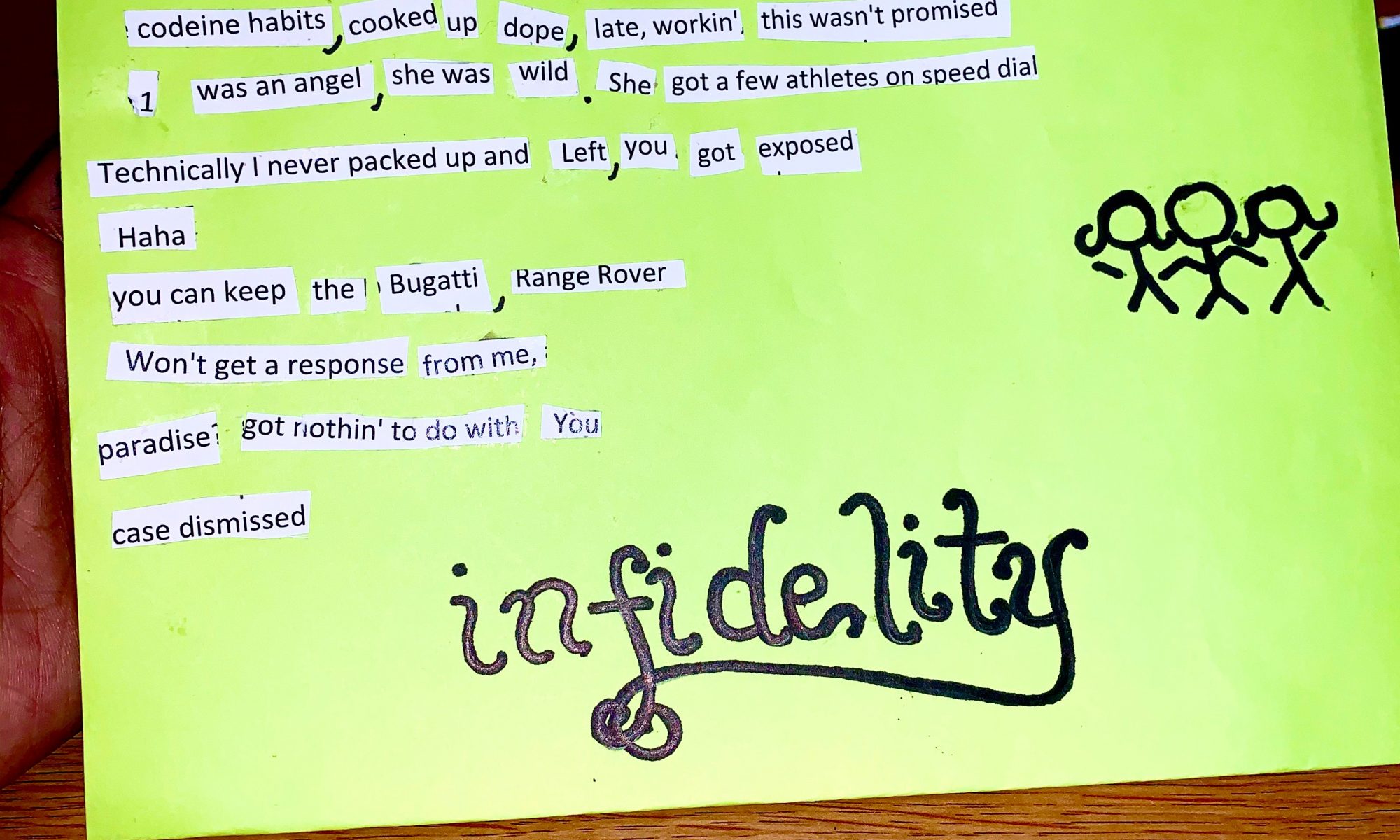To me, Claudia Rankine’s Citizen: An American Lyric, is an amazing piece because it has the ability to make anyone either feel empathy or sympathy after hearing the devastating stories of discrimination against African American’s . It invites anger, sadness and even outrage. Section VI is the longest section of the book; it comes out to a total of sixty pages. These sections move out of the conceptual world of the previous sections and into the precise details of the events mentioned in this one. Rankine mentions multiple example of unfair moments that has occurred in African American life. These tragedies show how clearly biasness is predominant in profiling African Americans. Rankin uses second person in the following sections as a way of “pointing fingers” to show the injustice of Africans Americans all over the world.
The main theme of chapter six was to show that prejudice against African Americans is still very much alive today. The first section called “August 29, 2005/ Hurricane Katrina”, illustrations how hard life for African Americans was following the hurricane disaster. The speaker says, “some said where were the buses? And simultaneously someone else said, FEMA said it wasn’t safe to be there” (page 84). By using the word FEMA, Rankin shows how unrepresented black people were in the eyes of the government, and in the eyes of the world. This section ends with a painting of a black man made out of hectic gold and blue dots. In the photograph, it appears that the gold and blue dots are “taking over his body”. It seems as though it is suffocating him, making him lack control. This is probably how the African Americans in New Orleans felt after the hurricane.
Clear examples of injustice towards African Americans is also shown in the section called “June 26,2011 / In Memory of James Craig Anderson,”. This passage mentions the death of an African American man, who was killed by white teenagers. The young white teens beat James Craig Anderson and ran him over with their pick-up truck, JUST because he was African American. This is a clear representation of ignorance because James Craig Anderson was killed because he wore the skin that he was born with. The murderers sound disgustingly proud of the fact that they committed such acts, “I ran that nigger over, itself a record-breaking hot June day in twenty-first century” (Pg. 94). The previous quote shows how repression of African Americans is still in effect. The white young men are not looked at as gang members, or gangsters, but they are described as “just a teen, with straggly blond hair” (94).
The section called “Stop and Frisk” has one of the few titles with no date in it. Rankin wanted to draw attention to the daily struggles that African Americans face during everyday life. In this section, a black man got detained JUST because he was African American. A police vehicle comes to a halt and the narrator has no choice but to get on the ground despite the fact that he is not even a criminal and committed no criminal acts. He was humiliated, his clothes taken away and he was beaten just for fitting the description of an African American criminal. The narrator was given instructions to stand naked after the charge of a simple offense such a speeding is decided on. “The charge the officer decided on was exhibition of speed. I was told after the fingerprinting, to stand naked. I stood naked. It was only then I was instructed to dress, to leave, to walk all those miles back home”. Although it is hard to imagine and believe, traumatizing moments like these happen to black young men way too often from being racially profiled. Why is it easier for an African American to go to prison than a white American? The section ends with an unclear, slightly burned black and white photo of a crowd of African Americans.
This book of events makes one think of all of the moments that they have either hurt someone’s feeling or have had their feelings hurt. After reading the stories told, you cannot help but to be more aware of the things you say towards people. Rankin uses all of these true events to show that microaggression and discrimination is still an issue we battle with in society. I believe that this book is so important because she gives African American’s a chance to have their stories HEARD instead of silences. It is political in a sense because Rankin brought exposure to a problem that we need to work on together in order to fix.
Discussion Questions:
- Which section in Chapter six did you relate the most to? Were you the victim in the situation, or were you the person victimizing
- Have you ever had a moment in life where you felt unnoticed or important? How did you combat with it?
Works Cited
Rankine, Claudia, 1963- author. Citizen: An American
Lyric. Minneapolis, Minnesota: Graywolf Press, 2014.

